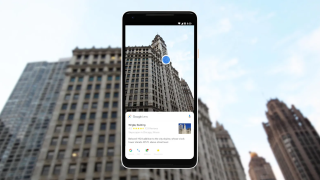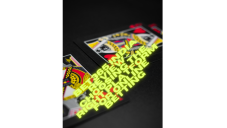Atlas Robot Can Navigate Its Way Through Narrow Space And Uneven Terrain
Sundar Pichai - Jul 17, 2019

Boston Dynamics recently published a video regarding its humanoid robot Atlas which can walk on uneven surfaces on its own
- Cafe In Tokyo With Robot Waiters Controlled By Disabled Staff
- This $333,000 Robot Kitchen Can Cook 5,000 Recipes From Scratch
- Experts Build A Robot Hand That Smells Like A Woman For Lonely Men To Hold
Boston Dynamics, an American engineering and robotics design company, recently published a video regarding its humanoid robot Atlas. Following that, it now can walk on an uneven surface, a leap from the first time it appeared in public.
Back in 2013, Atlas was able to walk over flat terrain, but it needed supports from engineers who operated the machine through a user interface. That was one of the reasons why the robot fell in The Defense Advanced Research Projects Agency’s (DARPA) Robotics Challenge in 2015. Since then, the robot has considerably improved on both features and movement capabilities.

With the new software designed by the Institute for Human and Machine Cognition (IHMC), Atlas does not need a human operator anymore.
At first, IHMC’s algorithm skims through the environment around the robot using its sensors; then, it segments the objects into different sections. Data collected helps to create a model of the environment in the form of polygon series. Based on that, Atlas itself plans each step to walk through obstacles.
With this new method, Atlas is believed to be able to cover both flat and uneven surface. It even can get through narrow spaces. When it is complete, the robot will open new opportunities to rescue victims during disaster events, which has always been a challenging task for traditional rescue services.
According to IHMC’s announcement, the new software works flawlessly on flat grounds. When it comes to the narrow and rough environment, it still shows some flaws as the robot might fall sometimes. Official statistics show that on rough terrain, the robot has a success rate of 90%, while on narrow ground, the figure is 50%.
Another robot also making impressive progress is Valkyrie from NASA’s Johnson Space Center. Unlike Atlas, Valkyrie maps out only a few steps before its actual move. The method makes it more adaptive to changes in paths, and reach the goal much more quickly.
Featured Stories

Features - Dec 18, 2024
6 Cutting-Edge Features of Galaxy AI & Lineup of Supported Samsung Smartphones

Features - Jan 23, 2024
5 Apps Every Creative Artist Should Know About

Features - Jan 22, 2024
Bet365 India Review - Choosing the Right Platform for Online Betting

Features - Aug 15, 2023
Online Casinos as a Business Opportunity in India

Features - Aug 03, 2023
The Impact of Social Media on Online Sports Betting

Features - Jul 10, 2023
5 Most Richest Esports Players of All Time

Features - Jun 07, 2023
Is it safe to use a debit card for online gambling?

Features - May 20, 2023
Everything You Need to Know About the Wisconsin Car Bill of Sale

Features - Apr 27, 2023
How to Take Advantage of Guarantee Cashback in Online Bets

Features - Mar 08, 2023
Comments
Sort by Newest | Popular